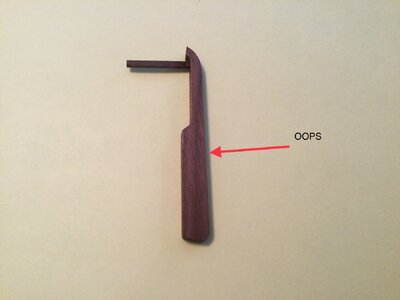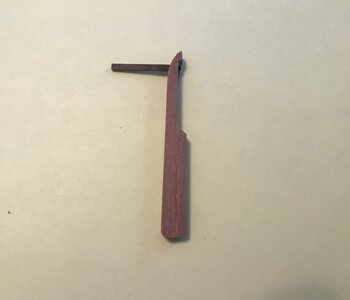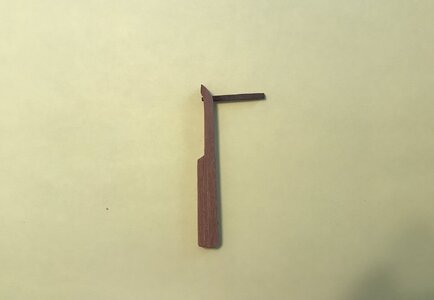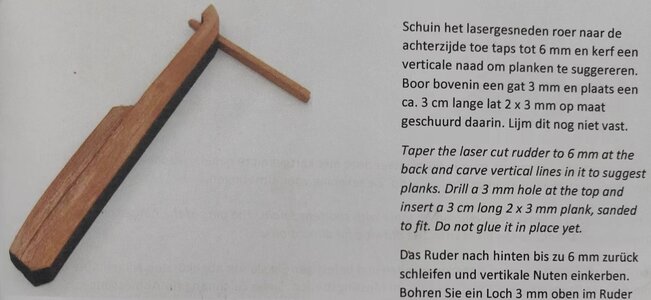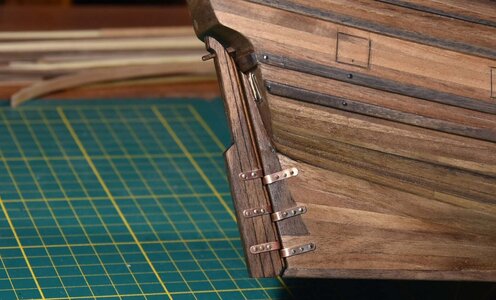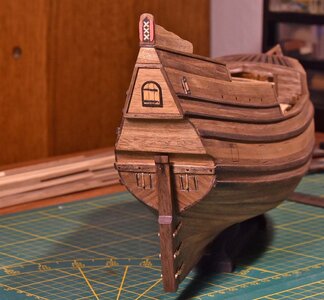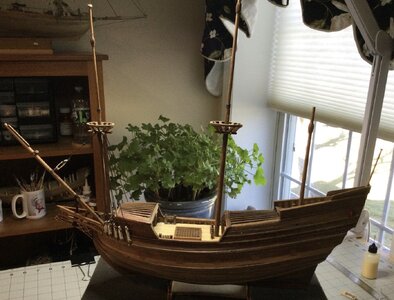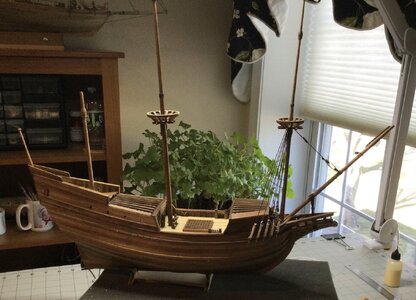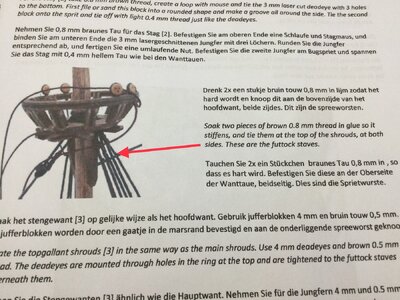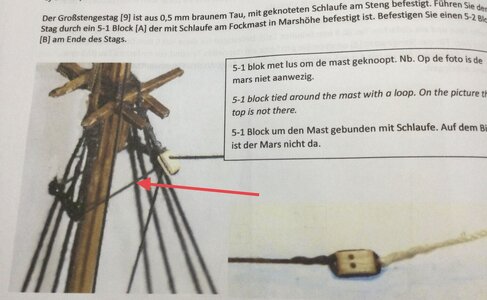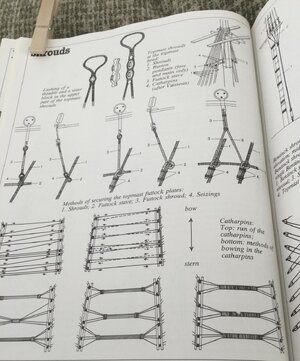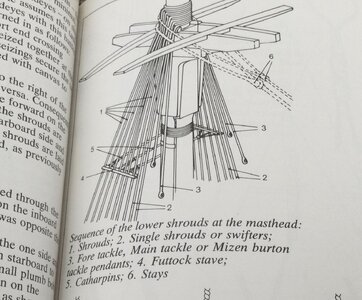Jan, the translations you will have to do yourself!
 @pietsan Piet Sanders
@pietsan Piet Sanders
Hoe het putting- en stengenwant tot stand komen laat ik hier zien, let wel, dit is mijn manier en is dus niet per definitie de enige juiste manier...
Eerst het puttingwant, wat op dit model eenvoudiger is als op de meeste modellen, omdat er maar twee touwen aan beide kanten komen evenals het stengenwant wat ook maar uit twee hoofdtouwen bestaat. (tekst onder elke foto/collage)
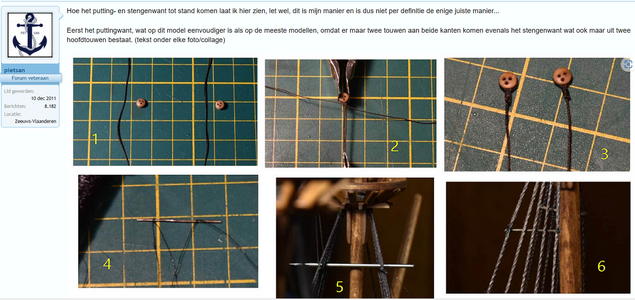
(1), nodig twee garens van (in mijn geval) 0,25 mm dik en ong. 150 mm lang en twee juffers van 3 mm. De touwen voor het putting- en stengenwant zijn de helft dunner dan de hoofdtouwen van de mast zelf. (2), het touw voor het puttingwant word met een bindsel om de juffer(s) gelegd zoals te zien op plaatje (3). (4) de spreeworst maak ik van een stukje donker ijzerdraad wat in het pakket van het model zit, je kan hiervoor ook een stukje dikker touw gedrenkt in lijm voor nemen, de lijm zorgt ervoor dat het touw hard word. Hier worden twee dunne draadjes (één-tiende mm) aan geknoopt met een mastworpje ter hoogte van de twee buitenste hoofdtouwen. (5) de positie van de 2e spreeworst word met een recht item bepaald zodat beide gelijk liggen. (6) de spreeworst word aan de buitenste hoofdtouwen geknoopt met de twee draadjes uit plaatje 4 en geborgd met een drupje lijm.
De eindjes van de spreeworst worden afgeknipt met een kniptangetje, gelijk met de buitenste hoofdtouwen.
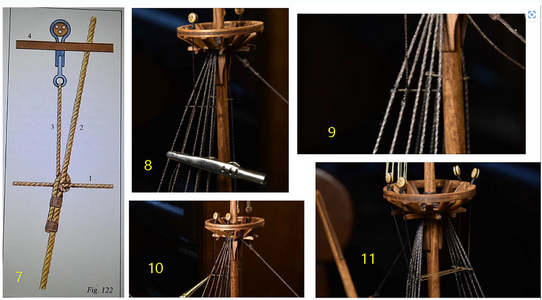
Het touw voor het puttingwant word door één van de gaatjes op de mastring gestoken (8) en met een halve slag om het 2e hoofdtouw en de spreeworst gelegd zoals te zien op de tekening (7) waar 1 de spreeworst is, 2 het hoofdtouw, 3 het touw voor het puttingwant en 4 de mastring. Het puttingwant word strak gezet, zodanig dat het hoofdtouw net niet naar buiten word getrokken en vast gezet met een klemmetje ook te zien op plaatje 8. (9) het touw voor het puttingwant word direct onder de spreeworst vast gemaakt aan het hoofdtouw met een bindsel van het zelfde dunne draad, dit voorkomt een lelijke dikke knoop ter plaatse. (10) de spreeworst word bij getipt met hennep kleurige verf. (11) een kleine zwichting zorgt ervoor dat bij het afspannen van het stengenwant de hoofdtouwen niet naar buiten worden getrokken.
And this is why Piet is unequalled as a model builder!



